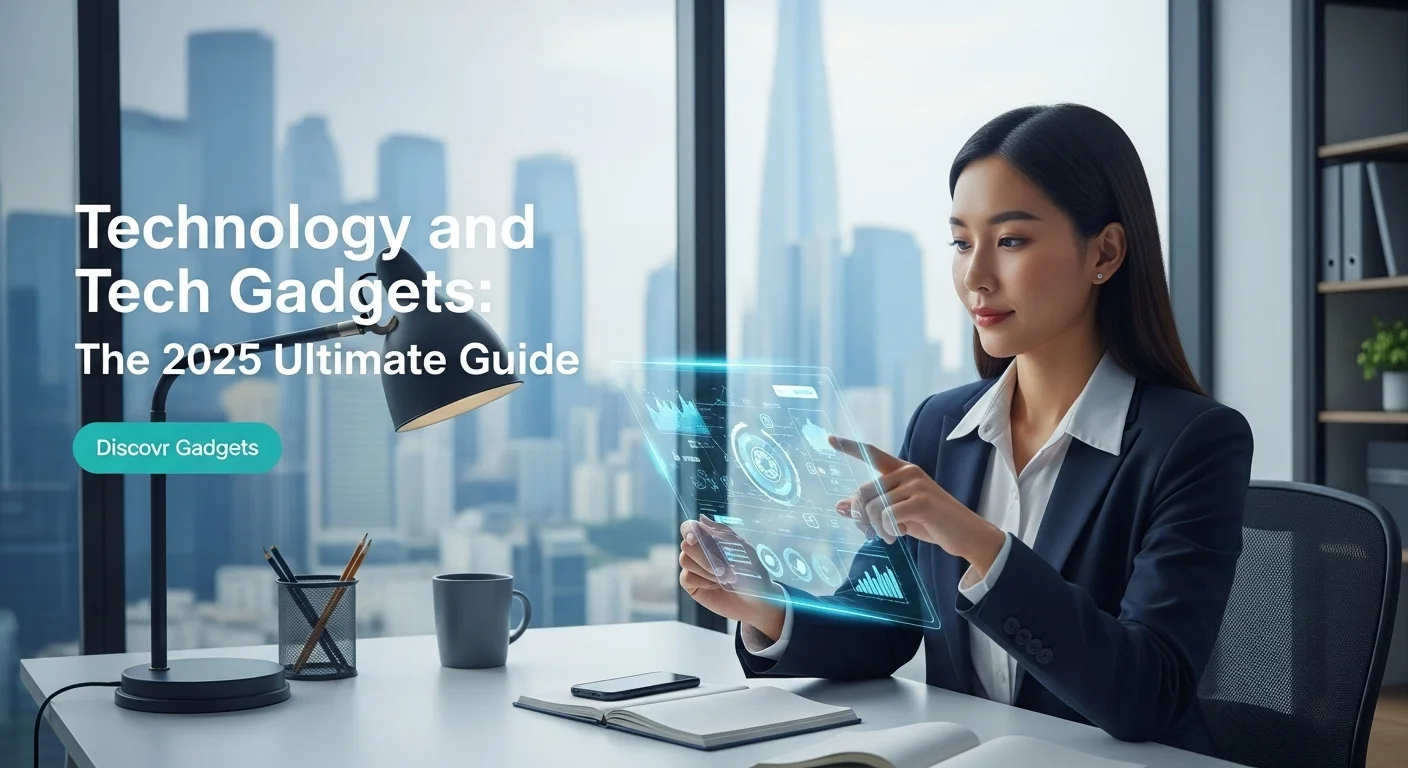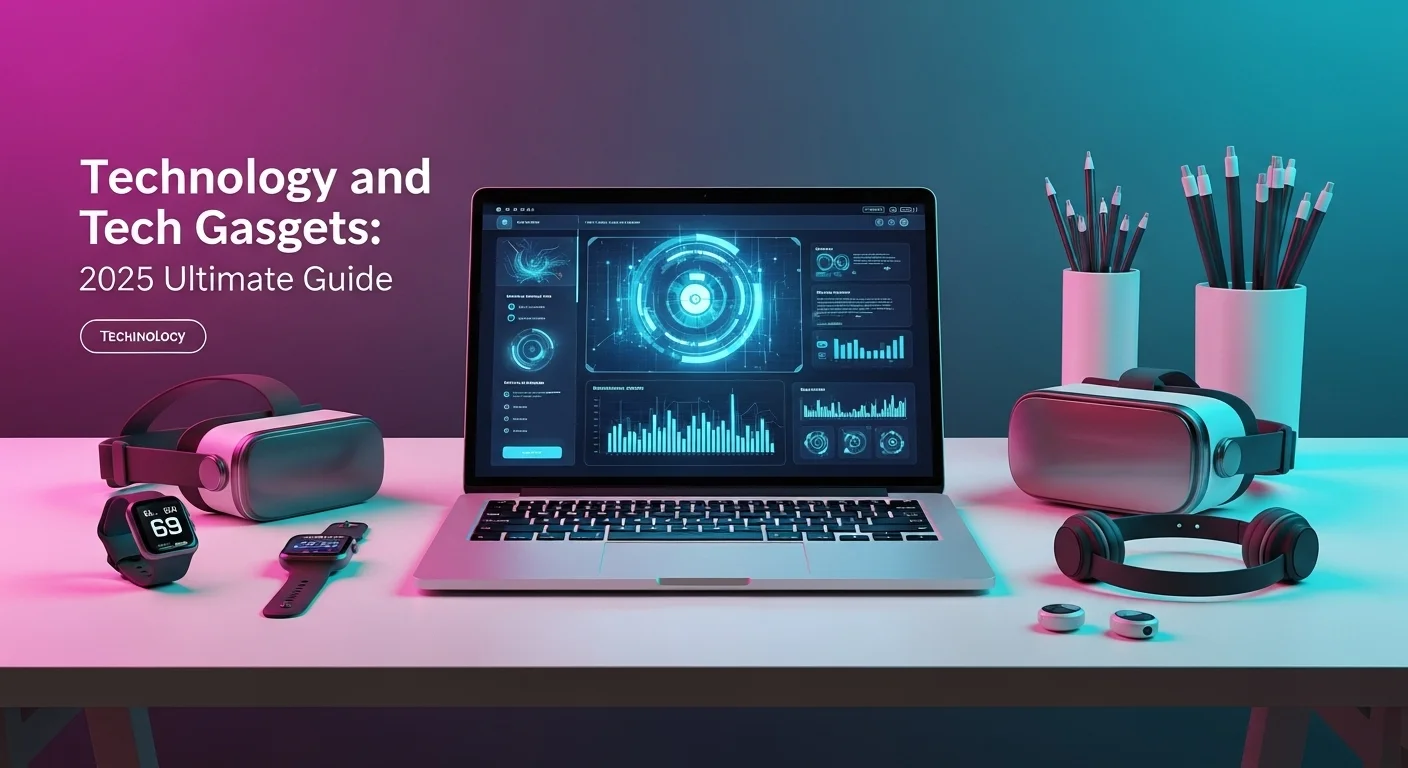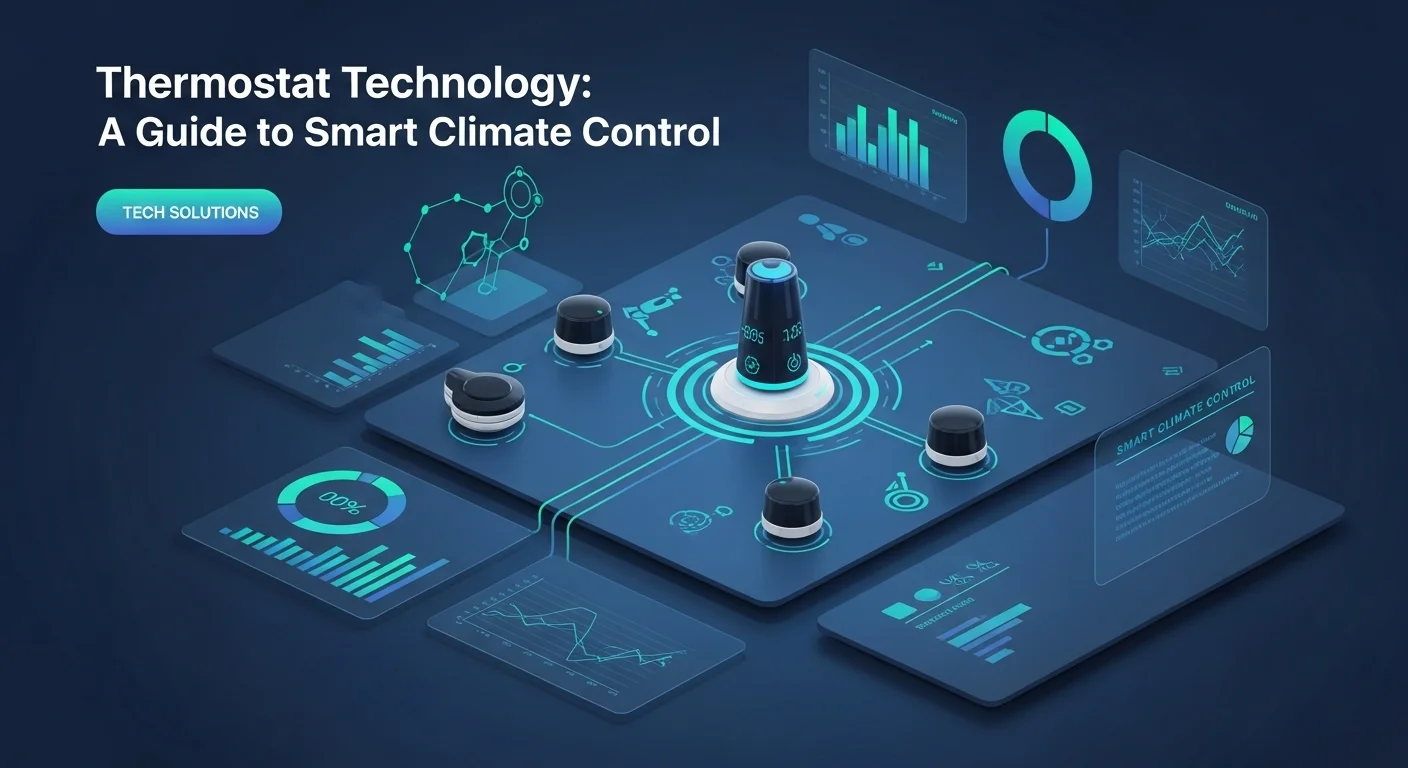My Guide to Tech Gadgets: What’s Worth Your Money in 2025

Executive Summary
In my years of working with technology, I’ve seen 'tech gadgets' evolve from quirky novelties to the very core of our lives. They're not just toys; they're the tools that shape our work, our homes, and how we connect with each other. This guide is my personal take on the gadget universe, built from hands-on experience. We'll look back at how far we've come since the boom of 2020 and peek into what 2025 has in store. For business owners, I'll show you how the right device can be a game-changer for your team's productivity and give you an edge over the competition. For fellow tech lovers, we'll explore the coolest gear that makes life easier and more fun. My goal is simple: to cut through the hype and give you the practical insights you need to choose the right gadgets, whether you're outfitting your office or just looking for your next favorite piece of tech.
Table of Contents
Table of Contents
- What Exactly Are Tech Gadgets, Anyway?
- From Novelty to Necessity: A Quick History I've Lived Through
- How Our Gadget Obsession Fuels Tech Progress
- The Real-World Impact on Business
- What's Next? A Glimpse into 2025
What Exactly Are Tech Gadgets, Anyway?
When people ask me what a 'tech gadget' is, I tell them to think beyond just the latest smartphone. At its heart, a gadget is a clever device built to solve a problem or make a task easier. In today's world, that means the little pieces of technology that have become extensions of ourselves—our smartwatches, our wireless earbuds, the smart speakers in our kitchens. They are the friendly face of incredibly complex technology. You don't need to understand cloud computing to ask your smart assistant for the weather, and that's the magic of it. Gadgets are the bridge between powerful, abstract tech and our everyday lives.
Their importance is huge because they’re how most of us experience progress. They make technology tangible. The relentless demand for gadgets that are smaller, faster, and smarter is what pushes engineers to innovate. It’s a cycle: we want better gadgets, so companies invent better batteries, faster chips, and smarter software. This is how technology moves forward, one cool new device at a time.
From Novelty to Necessity: A Quick History I've Lived Through
I still remember the feeling of getting my first portable cassette player. It was bulky, ate batteries for breakfast, but it was my personal bubble of music. Back then, gadgets were standalone wonders: a calculator, a digital watch. They didn't talk to each other. The early 2000s gave us PDAs and MP3 players, hinting at a connected future. But the real earthquake was the smartphone. It took a camera, a music player, a GPS, and a computer and fused them into one device that fits in our pocket. It changed everything.
More recently, the wave of new tech gadgets in 2020 felt like another major shift. That's when the smart home really came alive. Smart speakers became the hub for everything from lights to security cameras. My own home started to feel more integrated. Smartwatches evolved from step counters to serious health devices, adding features like ECG and blood oxygen monitoring. The 2020 era cemented the idea of an ecosystem of devices all working together, paving the way for the intelligent, 'ambient' technology we’re starting to see now.
How Our Gadget Obsession Fuels Tech Progress
Our collective desire for the next big thing, the next cool tech gadget, is what fuels the entire industry. It’s not just about consumerism; it’s a powerful engine for innovation.
- Making Things Smaller & More Efficient: Our demand for phones that last all day has pushed battery technology forward more than almost anything else. The same goes for the powerful, tiny processors inside them.
- Better Connectivity: We want our devices to work together without hassle. This need drove the creation of Wi-Fi 6 for less congestion and is now leading us to 'Matter'—a new standard that promises to let your Google, Apple, and Amazon devices all play nicely together.
- Smarter AI: Integrating AI into our phones and speakers makes it useful. The AI in your phone's camera that makes your photos look better is a perfect example. Every time we use these features, we provide data that helps make the AI even smarter.
- Easier to Use: The competition to make gadgets intuitive has given us amazing touchscreens, voice commands that actually work, and gesture controls.
The Real-World Impact on Business
In my consulting work, I’ve seen firsthand that for businesses today, using the right tech gadgets isn't just a perk—it's a core part of a winning strategy. The right tools can completely change how a company operates.
Boosting Productivity: This is the most obvious win. It’s not just about laptops anymore. I’ve seen offices transform with high-speed document scanners that eliminate paper files, and smart notebooks that digitize handwritten notes instantly. For my own remote work, a portable monitor has been a total game-changer, giving me a dual-screen setup wherever I am. And let's be honest, in a noisy office or home, a good pair of noise-canceling headphones isn't a luxury; it's a necessity for focus.
Better Collaboration: With hybrid work here to stay, communication tools are everything. I'm a big fan of the new portable, AI-powered conference speakers. They can turn a small huddle space into a professional meeting room in seconds. It closes the distance between remote and in-office team members.
Smarter Data: The Internet of Things (IoT) is a goldmine for businesses. I've worked with logistics companies using simple sensor gadgets to track shipments and monitor vehicle health in real-time. This data helps them predict maintenance needs and optimize routes, saving a ton of money. It’s about making smarter decisions based on real-world information.
Tougher Security: Security is a constant worry. Modern gadgets offer real solutions. Biometric scanners and smart locks are great for physical security. For digital threats, I always recommend hardware security keys. They're a small gadget that provides a nearly phishing-proof way to log into important accounts. It’s a simple, powerful layer of defense.
What's Next? A Glimpse into 2025
Looking ahead, the best tech gadgets for 2025 won't just be 'smart'—they'll be 'intelligent.' The big theme is 'ambient computing,' where technology disappears into the background, helping you without you even having to ask. Think of smart glasses that provide helpful info without being intrusive, or AI assistants that proactively manage your calendar. We're moving from devices we command to companions that anticipate our needs. The gadgets we saw in 2020 laid the groundwork, but what's coming will feel more integrated, more personal, and more helpful than ever before.

A Complete Guide to Tech Gadgets: Breaking It Down
To really get a handle on the world of tech gadgets, you have to know the main players. I've spent years testing, reviewing, and living with these devices, and I find it helpful to group them into a few key areas. The lines are definitely blurring, but this gives you a great map for finding what you need for your life or your business.
The Main Types of Gadgets You'll Encounter
1. Wearable Technology
This is my personal obsession. Gadgets you wear have evolved so quickly from simple step counters to powerful health and communication hubs.
- Smartwatches (like Apple Watch & Samsung Galaxy Watch): These are your life's remote control on your wrist. I use mine for everything from checking messages and paying for coffee to tracking my heart health with the ECG feature.
- Smart Rings (like Oura Ring): For people who want deep health insights without a bright screen, these are fantastic. They discreetly track sleep and activity, giving you a 'readiness' score each day. It's a more passive, long-term approach to wellness.
- AR/VR Headsets (like Meta Quest & Apple Vision Pro): This is the next frontier. I’ve used them for everything from mind-blowing games to virtual meetings that feel like you’re in the same room. For businesses, they are incredible tools for training and product design.
- Hearables: My AirPods Pro are rarely out of reach. They aren't just for music anymore. With noise cancellation, they create a private bubble anywhere. Features like live translation are starting to feel like science fiction come to life.
2. Smart Home and Automation
This is all about making your home safer, more efficient, and more convenient. I love tinkering with my smart home and automation—it’s about small automations that make a big difference.
- Smart Hubs and Speakers (Amazon Echo & Google Nest): These are the conductors of your smart home orchestra. Using your voice to control lights, thermostats, and music just never gets old. They are the simplest entry point into home automation.
- Smart Lighting (Philips Hue): This is more than a gimmick. I have my lights set to slowly brighten in the morning to wake me up gently and dim in the evening to help me wind down. It saves energy and improves your daily rhythm.
- Smart Security (Ring & Arlo): Video doorbells and outdoor cameras have given me incredible peace of mind. Getting a notification on my phone when a package is delivered is a simple but powerful feature. The AI that can tell the difference between a person and a passing car is a huge improvement.
- Climate Control (Ecobee & Nest Thermostats): A smart thermostat is a must-have. It learns your schedule and adjusts the temperature automatically, saving you real money on your energy bills without sacrificing comfort.
3. Office and Productivity Gadgets
These are the unsung heroes that make work life better, especially in a hybrid world.
- Ergonomic Gear: I learned the hard way that a good ergonomic mouse and keyboard are not optional. They prevent strain and make long hours at the desk much more comfortable.
- Smart Document Tools: I mentioned these before, but tools like the Rocketbook smart notebook are brilliant for people like me who still love to write by hand but need digital copies of everything.
- Portable Displays: If you travel for work or just like to work from a coffee shop, a portable monitor is a non-negotiable for me. It basically doubles your screen real estate and your productivity.
- AI Note Takers: I’ve been testing devices that transcribe meetings automatically. They let you focus completely on the conversation instead of frantically typing notes. They are a massive time-saver.
Under the Hood: What Makes a Gadget Great
The sleek design of a gadget is what catches your eye, but the technology inside is what really matters. Here's what I look for:
- Connectivity: This is how devices talk to each other. Think of it like languages. Wi-Fi 6 is great for crowded networks. Bluetooth 5 is essential for high-quality audio on your earbuds. But the big one to watch for is Matter. It's like a universal translator for smart home devices, promising that your future gadgets will work together no matter who makes them. When you're shopping for the best tech gadgets of 2025, look for the Matter logo.
- Processing Power (The 'Brain'): Every gadget has a 'System on a Chip' (SoC), its brain. The best new ones have a special part called an NPU for handling AI tasks right on the device. This makes features like real-time photo enhancement or voice commands faster and more private because they don't need to send data to the cloud.
- Sensors: This is how a gadget senses the world. Your phone has dozens. The LiDAR scanner in high-end iPhones, for example, creates a 3D map of a room, which makes augmented reality (AR) apps look incredibly realistic.
A Smart Business Strategy for Gadgets
For my business clients, I always say that buying a box of cool tech gadgets isn't a strategy. You need a plan. Here's the no-nonsense process I've seen work time and time again.
- Identify the Real Problem: Don't start with the gadget. Start with the pain point. Is your team struggling with hybrid meetings? Are you worried about data security? Once you know the problem, the solution (often a gadget) becomes obvious. If it's meeting fatigue, maybe you need better webcams and conference speakers.
- Pick a Platform, Start Small: Don't buy a random assortment of devices. Try to stick to an ecosystem (like Google, Microsoft, or Apple) for a smoother experience. When trying something new, like smart sensors, run a small pilot test first. See if it actually works for your team before you invest heavily.
- Lock It Down: This is the step people forget. Every new gadget is another door into your network. You need a solid plan for managing and securing them. Use Mobile Device Management (MDM) software for company phones and laptops. For other connected devices, put them on a separate Wi-Fi network to isolate them from your critical business data. And for goodness sake, change the default passwords on everything!
- Train Your People: The best tech in the world is useless if no one knows how to use it. Run proper training sessions. Show your team how the new tools will make their jobs easier. It gets them excited and ensures you get your money's worth from the investment.
By thinking strategically, you can turn a simple purchase into a powerful system that makes your business more efficient, secure, and competitive.

Tips and Strategies: Getting the Most from Your Tech Gadgets
I've seen people with desks full of the latest tech gadgets who are still frustrated and inefficient. The secret isn't just owning the tech; it's knowing how to use it wisely. Here are my go-to tips for both regular tech fans and businesses to build a secure, efficient, and genuinely helpful tech life. This is how you prepare for the smart world of the best tech gadgets 2025.
Getting the Basics Right: Security and Maintenance
Before we talk about cool features, we have to talk about the fundamentals. Think of this as the foundation of your digital house.
Your First Priority: Digital Security
In our connected world, bad security habits are like leaving your front door wide open. Let's fix that.
- Stop Reusing Passwords: Let's be honest, we've all done it. But using the same password everywhere is a disaster waiting to happen. The solution is simple: get a password manager. It will create and remember strong, unique passwords for all your accounts. You only need to remember one master password.
- Use Multi-Factor Authentication (MFA): If you do only one thing from this list, make it this. MFA requires a second step after your password, like a code from an app on your phone. It is the single most effective way to stop hackers from getting into your accounts, even if they steal your password.
- Update Your Software. Always: Those update notifications you ignore? They often contain critical fixes for security holes. Turn on automatic updates. An out-of-date device is a prime target for attackers.
- Question App Permissions: When you install a new app, be skeptical. Does that simple photo filter app really need access to all your contacts? Go into your phone's settings and turn off any permissions that don't seem necessary.
- Secure Your Home Base (Your Wi-Fi): Your router is the gatekeeper for all your gadgets. Make sure it has a strong, unique password and uses WPA3 encryption if possible. I also recommend setting up a 'guest network' for visitors so their devices are separate from your main network.
Making Your Gadgets Last
A little care goes a long way. To keep your battery healthy, try to keep it between 20% and 80% charge. Avoid draining it to zero or leaving it plugged in at 100% all the time. Keep your devices clean, especially the charging ports. This simple maintenance extends their life, which is better for your wallet and the planet.
Smart Moves for Businesses Using Tech
For businesses, gadgets aren't toys; they are investments that should deliver a return. Here's how to think strategically.
Finding Your Competitive Edge
Think beyond just making your office run better. How can gadgets improve your customer's experience? I've seen a local clothing store use tablets as 'endless aisle' kiosks, allowing customers to order sizes they don't have in stock. A service company I worked with equipped their field technicians with AR glasses, allowing senior engineers to 'see' through their eyes and guide them through complex repairs remotely. This kind of creative thinking is what sets a business apart.
The Must-Have Management Tools
As you add more devices, you need software to manage them all.
- Mobile Device Management (MDM): For company phones and laptops, an MDM solution is non-negotiable. It lets your IT team enforce security rules, install apps, and remotely erase a lost or stolen device to protect company data.
- Collaboration Hubs: Tools like Slack, Microsoft Teams, or Google Workspace are the digital glue. They bring communication, file sharing, and video calls together, making teamwork seamless across all your team's different gadgets.
For the Tech Lover: Making Your Gear Work for You
For all my fellow tech enthusiasts, the goal is to create a personal ecosystem that just *works*.
- Automate the Boring Stuff: Dive into automation tools like Apple's Shortcuts or Google Home Routines. I have a 'Good Morning' routine that turns on my office lights, tells me my first appointment, and starts a podcast. It's a small thing that makes my morning smoother.
- Be Curious: Your gadgets are packed with hidden features. I love watching YouTube reviews or reading forums for a new device I get. You'll discover tricks you never would have found on your own.
- Build an Ecosystem: While it's getting easier to mix and match brands, you'll generally have a smoother experience if your main devices (phone, watch, computer) are from the same ecosystem. They are designed to work together seamlessly.
Staying Ahead of the Curve for 2025
The tech world moves fast. Here’s how I stay prepared for what's next.
- Look for 'Matter' Support: When buying new smart home gear, I'm now making sure it supports the Matter protocol. This is my insurance policy that it will work with other devices I buy in the future.
- Think About Sustainability: E-waste is a huge problem. I look for companies that use recycled materials and have good trade-in or recycling programs. Sometimes, repairing an old gadget is a much better option than replacing it.
- Consider the Ethics: With AI everywhere, it's important to ask how your data is being used. I try to support companies that are transparent about their privacy policies. For a deeper dive, especially on IoT security, the U.S. Cybersecurity & Infrastructure Security Agency (CISA) has a great guide on 'Securing Internet of Things (IoT) Devices' that I recommend to everyone.
By blending smart security with a strategic mindset, your tech gadgets can become a powerful, integrated system. This isn't just about enjoying today's tech; it's about being ready for the incredible innovations that the best tech gadgets of 2025 will bring.
Expert Reviews & Testimonials
Sarah Johnson, Business Owner ⭐⭐⭐
As a small business owner, I found this useful. I'd love to see a few more specific examples of gadgets for a retail shop, but it's a great starting point.
Mike Chen, IT Consultant ⭐⭐⭐⭐
Solid overview of tech gadgets from an IT perspective. It covers the key trends well. The explanation of the 'Matter' protocol was particularly clear.
Emma Davis, Tech Expert ⭐⭐⭐⭐⭐
This is an absolutely fantastic guide! As someone deep in the tech world, I was impressed by how comprehensive and easy to understand it was. I'm saving this for reference.



